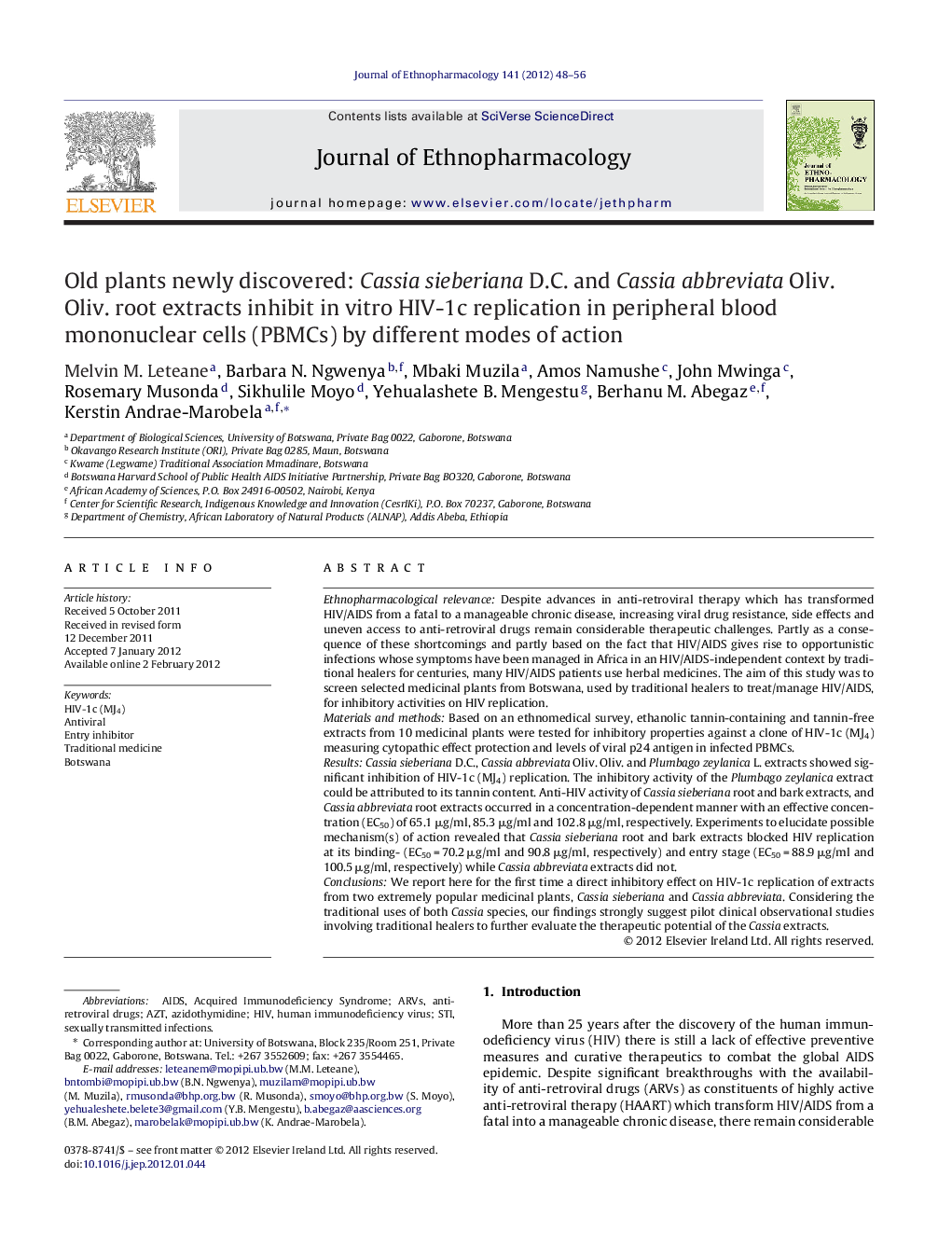| Article ID | Journal | Published Year | Pages | File Type |
|---|---|---|---|---|
| 5838194 | Journal of Ethnopharmacology | 2012 | 9 Pages |
Ethnopharmacological relevanceDespite advances in anti-retroviral therapy which has transformed HIV/AIDS from a fatal to a manageable chronic disease, increasing viral drug resistance, side effects and uneven access to anti-retroviral drugs remain considerable therapeutic challenges. Partly as a consequence of these shortcomings and partly based on the fact that HIV/AIDS gives rise to opportunistic infections whose symptoms have been managed in Africa in an HIV/AIDS-independent context by traditional healers for centuries, many HIV/AIDS patients use herbal medicines. The aim of this study was to screen selected medicinal plants from Botswana, used by traditional healers to treat/manage HIV/AIDS, for inhibitory activities on HIV replication.Materials and methodsBased on an ethnomedical survey, ethanolic tannin-containing and tannin-free extracts from 10 medicinal plants were tested for inhibitory properties against a clone of HIV-1c (MJ4) measuring cytopathic effect protection and levels of viral p24 antigen in infected PBMCs.ResultsCassia sieberiana D.C., Cassia abbreviata Oliv. Oliv. and Plumbago zeylanica L. extracts showed significant inhibition of HIV-1c (MJ4) replication. The inhibitory activity of the Plumbago zeylanica extract could be attributed to its tannin content. Anti-HIV activity of Cassia sieberiana root and bark extracts, and Cassia abbreviata root extracts occurred in a concentration-dependent manner with an effective concentration (EC50) of 65.1 μg/ml, 85.3 μg/ml and 102.8 μg/ml, respectively. Experiments to elucidate possible mechanism(s) of action revealed that Cassia sieberiana root and bark extracts blocked HIV replication at its binding- (EC50 = 70.2 μg/ml and 90.8 μg/ml, respectively) and entry stage (EC50 = 88.9 μg/ml and 100.5 μg/ml, respectively) while Cassia abbreviata extracts did not.ConclusionsWe report here for the first time a direct inhibitory effect on HIV-1c replication of extracts from two extremely popular medicinal plants, Cassia sieberiana and Cassia abbreviata. Considering the traditional uses of both Cassia species, our findings strongly suggest pilot clinical observational studies involving traditional healers to further evaluate the therapeutic potential of the Cassia extracts.
Graphical abstractEthanolic extracts from Cassia sieberiana roots (Csr) used by the traditional healer Amos Namushe for HIV/AIDS management in Botswana protect peripheral blood monocytic cells (PBMCs) from HIV-lc induced cell damage.Download high-res image (272KB)Download full-size image
